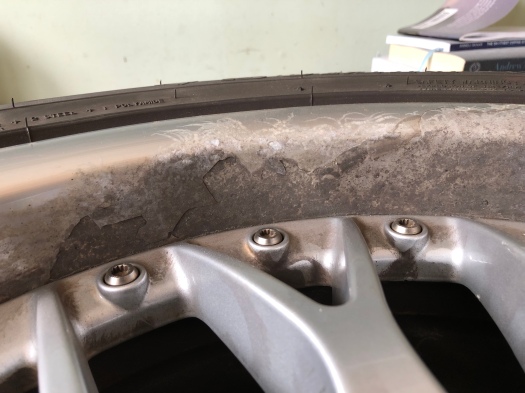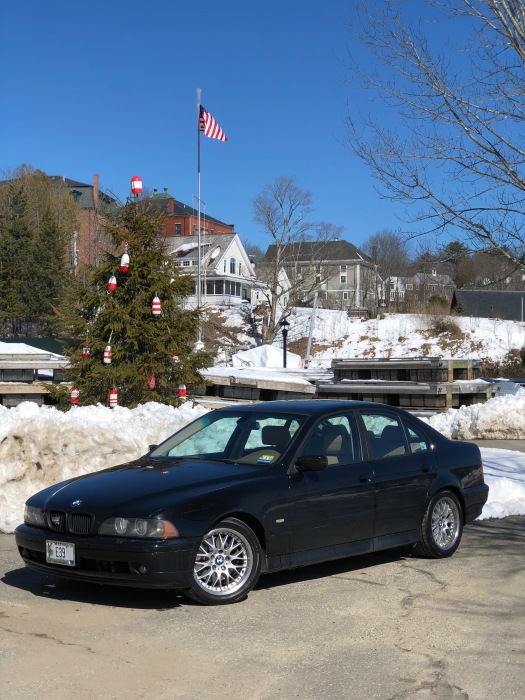
The clear paint on the Style 42 wheels on my E39 530i BMW is notorious for peeling off and exposing the metal underneath to pitting. This is because paint simply doesn’t like to stick to polished aluminum. Eventually, after much time has passed and many miles gone by, grime begins to make its way underneath the coat of paint.
Style 42 wheels are two-piece wheels. This means that the center can be separated from the “barrel” by undoing the many bolts holding them together. BBS, the manufacturer of these wheels, produces many two-piece wheels, such as the Style 5s used in the earlier E39 528i (only with the sport package). Unfortunately, even though the two-piece nature looks great, the gap between the two pieces allow crud to build up, and thus is where the pitting always begins. After that, the grime just works its way further out on the polished lip and eventually paint is flaking off the entire wheel.

I began this project by using an old putty knife to scrape off all of the loose paint and dirt. I then took out a profile sander (I just used a flat attachment) and began sanding. The areas without paint were sanded to bare metal quickly, while the areas with non-peeled paint took much longer to sand through. I found that applying lots of pressure down on the sander helped to speed up the process, although it was pretty uncomfortable and tiresome. Unfortunately, I couldn’t get into the crack between the wheel center and the “barrel” and thus there is still some grime and old paint in the cracks.
I could have taken the wheels apart, but I heard that the bolts holding them together are often seized and can require the use of a torch to un-seize them. Obviously, I couldn’t use a torch while the tires were mounted, so I decided that I wouldn’t take the wheels apart. Also, these bolts are known for breaking inside the wheels, which is a major pain. And the bolts alone are very expensive and somewhat difficult to sort, so I would probably end up buying another Style 42 wheel to source the bolts from. Long story short, I decided it wouldn’t be worth the time and cost to take the wheels apart to get them cleaned up perfectly.
When I finished sanding the first wheel with the sander, I then changed to a smaller grit sand paper and began hand-sanding to make the abrasion marks all travel in the same direction. I then moved to a much smaller grit paper (1500 grit), which I could only find at an AutoZone. As I sanded with this paper, the metal became shinier and shinier.
I stopped using sand paper all together and began polishing the wheels with a metal polish and microfiber cloth. Eventually, I got the lips of the wheels pretty shiny.
Next, I took another microfiber cloth and wiped down the wheels to get any brake dust off. I then took them outside and sprayed some tire shine on the rubber to make it look even more appealing. As a final touch, I removed the center caps and used some Ultimate Black trim restorer to dye the gray plastic rings around the edges of the BMW roundels. I popped these into each of the wheels and the job was finally done.














